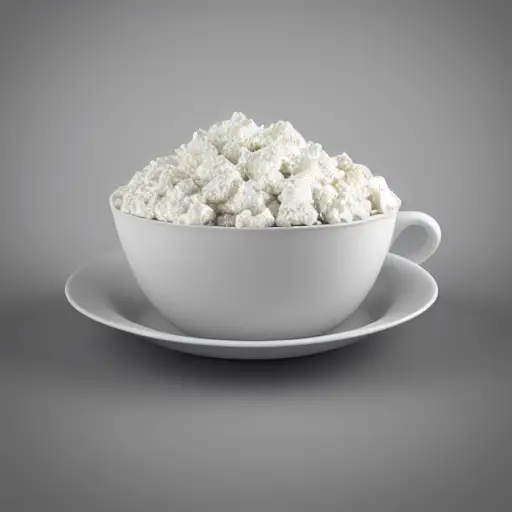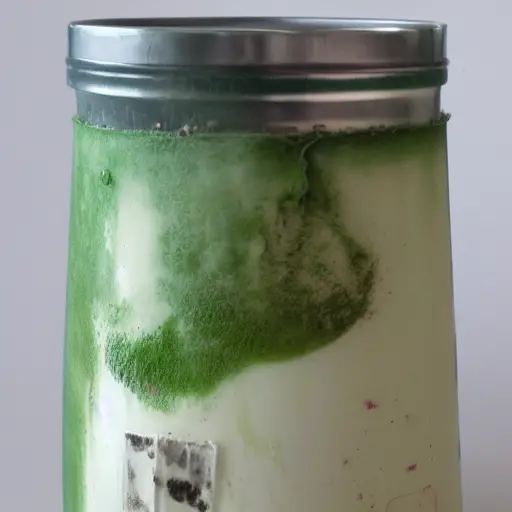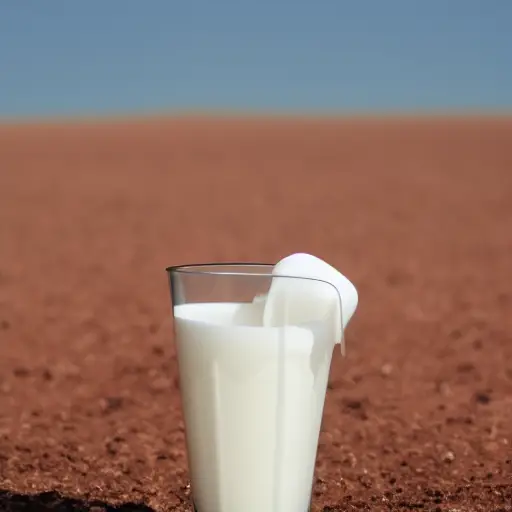When your coffee creamer becomes chunky, it could mean one of two things: either your coffee is too acidic or it is out of date. It might also be due to the acidity of the coffee beans.
To determine what the cause is, read our articles on Coffee Quality and Curdling.
But here’s a brief summary that should help you sort your coffee out.
Acidic Coffee

If you love coffee, you know how important the acidity level of your coffee is. If you remember your chemistry class, you know that a cup of coffee has a pH level between 6.95 and 7.26. This means that it has the right amount of acidity and baseness to improve the taste of your drink. The pH scale shows that acids and bases have different reactions with water based on their composition. Bases are alkaline chemical elements with a pH level greater than 7 while acids are less acidic and have a pH value less than 7.0. The litmus test can tell the difference between an acid and a base by turning a blue or red piece of litmus paper.
The acidity level of coffee varies according to the brewing method used. For instance, coffee that is brewed hot is more acidic than cold brewed coffee. Another factor is the size of the coffee grounds. If the ground is smaller, then it has a higher surface area, which increases the amount of acid extracted during brewing. This is why a light roast is more acidic than a dark one. Acidity levels of coffee creamers also increase when they are added to hot beverages.
While it is safe to drink coffee with creamer, there are a few things you should keep in mind when you add it to your cup. First, acidity can curdle cream. When the creamer is mixed with acidic coffee, the temperature changes quickly. The creamer will begin to curdle, and that is not good for your health.
How coffee affects curdling?

Curdling in coffee is caused by a number of factors. If you want to avoid this problem, be sure to use fresh cream and milk and to cool it completely before adding it to the brew. Coffee is slightly acidic and creamer that is added to hot coffee can make it curdle if it is not cooled enough. Coffee also contains various organic acids, including lactic acid. Coffee with a higher lactic acid content is more likely to curdle.
The best temperature for coffee is 195-205 degrees Fahrenheit. However, if you experience curdling after drinking it, you should drink it right away. If you don’t have the patience to wait for the coffee to cool, you can temper the milk by adding it to it before you drink it. This way, the milk will have more time to adjust to the coffee before it curdles.
If you don’t want to deal with curdling creamer, you can try using plant-based creamers. Many plant-based creamers are also subject to curdling. Using expired creamer is another cause of curdling in coffee. Be sure to use freshly brewed coffee and avoid using expired cream.
Adding milk to hot coffee can cause it to curdle, so it’s important to use fresh milk. Adding milk too quickly can cause it to become spoiled and cause a bitter taste. It’s not healthy and it may even make you sick. Aside from using fresh milk, you should also avoid adding milk that has been previously spoiled, because it could contain harmful bacteria.
Spoiled Creamer

If you discover your coffee creamer has gone bad, it may be time to throw it out. It will no longer taste good, and it may even cause you to get sick. It can cause diarrhea, vomiting, fever, and stomach cramps. Although the creamer will not taste terrible, it will be unpleasant and will keep you from drinking more.
A spoiled coffee creamer has a strange, unpleasant smell, and may even have a lumpy texture. A good way to determine if your creamer has gone bad is to smell it and taste it. Look for dark or gray spots on its surface. It may even have gone past its use-by date!
Drinking spoiled coffee creamer can lead to gastrointestinal problems and food poisoning. Even if you think it tastes fine, it could contain bacteria or fungus. The bacteria could make you sick, so you should not use it. However, if you must use coffee creamer, you can save it for another day.
To prolong the shelf-life of your coffee creamer, keep it refrigerated. Unlike dairy creamers, plant-based creamers can be stored at room temperature for three to six months. However, once opened, dairy creamers have a shorter shelf-life. After opening, it is important to use your coffee creamer within two weeks or less, or risk it going bad.
Temperature Complications

One of the most common reasons why coffee creamer gets chunky is sudden temperature changes. This happens because creamers’ proteins react to the sudden change in temperature. If you notice that your coffee creamer is thick and chunky, you should wait to add it to the coffee until it has cooled. In addition, do not add ice cubes to your coffee creamer before drinking it.
If your coffee creamer is chunky and sour, you may have an issue with its consistency. There are several causes of chunky coffee creamer, including an expired product, an acidic coffee, and base ingredients. If you’re not sure what’s causing your coffee creamer to be chunky, try a sample of coffee that you’ve made.
Effects of Sugar

If you are wondering how to prevent chunky coffee creamer, you need to understand that the amount of sugar in the beverage may play a big role. Acidity levels in coffee are often affected by creamer, but the coffee’s flavor and smell are also a big factor. If your coffee is too acidic, you may want to consider purchasing coffee with a low acid content or No Acid Coffee. Alternatively, you can add a bit of salt to the coffee, but this is not a permanent solution.
In addition to sugar, you should also pay attention to the ingredients in coffee creamers. You should avoid those that contain artificial sweeteners such as Aspartame, Sucralose, or Erythritol. Ultimately, you should choose a coffee creamer that contains only the ingredients you want, and avoid those that are bad for your body.
If you are worried about chunky coffee, one of the best ways to prevent it is to use plant-based creamers. These are healthier than sugary creamers and are less likely to cause your coffee to taste too acidic. Nevertheless, if you are concerned about the taste of your coffee and want to avoid chunkiness, you can use sugar syrup.
Using sugar syrup in coffee is a safer option than using solid sugar, which can cause an off-taste and odor. Another way to prevent chunky coffee creamer is to stir the sugar into the coffee while it’s still hot. This way, you can prevent it from reacting with the coffee and the acidity in the beans.
Tips to prevent coffee creamer from curdling
If you want to avoid coffee creamer from curdling, there are a few things you should keep in mind. First of all, make sure the cream you use is fresh and cool. You should also avoid using old creamers. These tend to contain lactic acid, which is a common cause of coffee creamer curdling.
Curdling is caused by an imbalance between the acidity of coffee and the acidity of the cream. It happens because the milk proteins coagulate and float on the surface of the coffee. To counter this effect, you can add a pinch of salt to your coffee.
Another common cause of coffee creamer curdling is acidity. Coffee is generally acidic, and the beans release nine different acids during the brewing process. The acidity of coffee can cause creamer to curdle or even turn sour. When this happens, the creamer’s casein and milk proteins start to coagulate. These coagulated pieces can float around the coffee, making it taste sour.
Some other causes of coffee creamer curdling are water hardness and the amount of lactic acid in the cream. These factors may make the creamer curdle, so you should test your coffee before pouring it.







